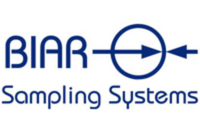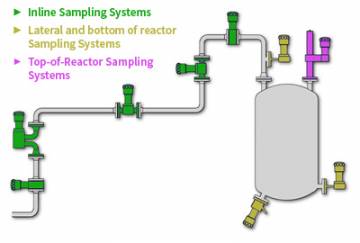Type of sample valves
To suit most process conditions and designs, we offer three types of sample valves in many configurations with numerous options:
| Type | Description | Pros | Cons |
|---|---|---|---|
| In-line Sample Valve | Fitted directly on the process line or on a bypass. A constant flow through the valve guarantees a directly representative sample. |
|
|
| Lateral Sample Valve | The valve is fitted on the side or bottom of a reactor or on the side of a larger pipeline. |
|
|
| Top of Reactor Sample System | Acts as a re-circulation loop. |
|
|
The first step in selecting a BIAR Sample Valve is to identify where it will be fitted on the process line. After you make that determination, you can outline technical specifications such as sampling temperature/pressure, size, class and product properties. Those specifications normally correspond to the Piping & Instrumentation Diagram (P&ID).
Today's Sampling Challenges Require Modular Solutions
Whether your application involves inline or reactor sampling, BIAR sampling valves are ideal because they are highly reliable, feature technology that eliminates waste, reduces emissions, and preserves sample integrity.
Our sampling valves can be easily disconnected for maintenance or cleaning and are highly customizable.
To determine the best configuration for your particular sampling system, consider these 10 questions:
-
Application: where do you need to sample from?
-
Location: where is the closest spot to the application that requires the least amount of piping modification and is safely accessible for the operator?
-
Is the sample valve to be installed:
1. On the side of a reactor or bigger process line?
2. Directly inline (Process line, recirculation or fast loop)? -
If inline, is it a horizontal or vertical pipeline?
-
What is the pipeline size and AINSI class?
-
What is the material of construction?
-
What are the operating and maximum temperatures?
-
What are the operating and maximum pressures?
-
How will the sample be collected? In a sample cylinder (aka "sample bomb") or an open-top container such as a bottle?
-
Is the process atmosphere sensitive?
Inline Valves vs. Reactor Sampling Valves
| Name | Advantages | Disadvantages |
|---|---|---|
| Inline Sampling |
|
|
| Reactor Sampling (Lateral Valve) |
|
|


